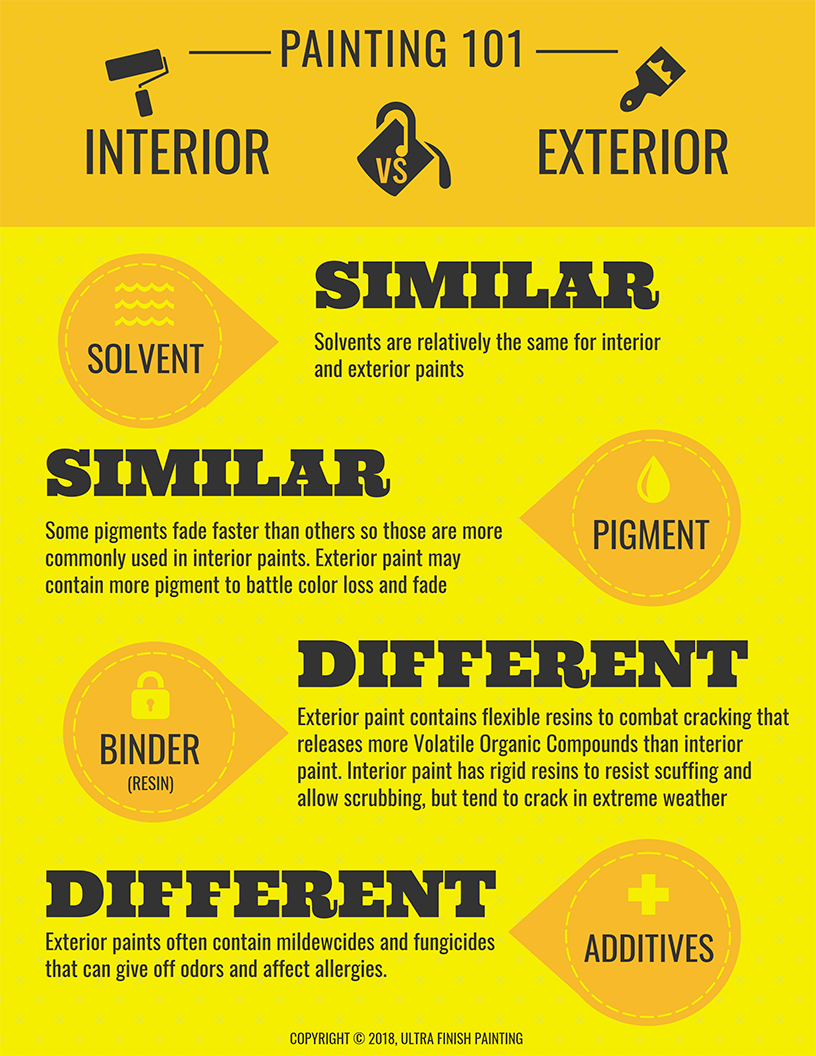When looking down the multiple aisles of paint at the hardware and home improvement stores, it can get overwhelming fast. There are so many different types of paint that you wonder how anyone could ever know which is the right one to choose. There is one initial decision that seems pretty easy, but even then, many people don’t know why there is a difference between interior and exterior paint. Seems simple enough… interior paint for your home’s interior, and exterior paint for the outside of your home.
Let’s take a closer look to see what exactly makes these two types of paint different…

All paint is made up of solvent, resin, additives, and pigments. You can read more about that in our article on What Paint Is Made Of. Both interior and exterior paints are pretty similar when it comes to solvents and pigments. There are minor differences with pigment types and amounts, but the biggest difference between interior and exterior paint can be found in the additives and the resin.
Flexible Resins
Because exterior paint is exposed to many types of weather conditions, it needs to be able to stand up to whatever nature throws at it. Extreme temperatures, direct UV rays, high winds and salty sea breezes can cause painted surfaces to expand and contract. Exterior paint contains flexible resins to help combat cracking and flaking. It also contains additives to help prevent staining, fading, and even mildew.
Conversely, interior paint is not exposed to extreme climate and weather changes, so it is made with more rigid resins which help make it less prone to scuffing and also much easier to clean.
Volatile Organic Compounds and Off-Gassing
So why not use exterior paint indoors if it can handle so much abuse? Interestingly enough, exterior paint’s flexible resins cause it to be more prone to scuffs and scratches. It also releases more volatile organic compounds (VOCs) as it cures and continues to release them after it is done curing, making it much more of a health threat. Exterior paints often contain mildewcides and fungicides that can give off odors and affect allergies.
So, as you can see, there are both functional and medical reasons to use the correct paint for the job. Interior paint will help you have the right color inside your home that won’t scuff and can be cleaned, while exterior paint will help you have a home color that won’t fade, crack, chip, stain or mildew through extreme weather changes. Keeping exterior paint outside will not only help you have a beautiful home on the outside, but you’ll also have a safer home on the inside.
